Molecular genetics
Molecular Cytogenetics
The molecular structure of chromosomes as carriers of genetic information with a special focus on sex chromosomes and their relationship to sex determination.
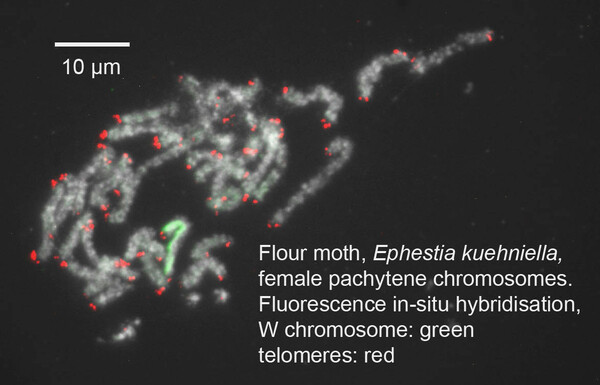
Molecular and supramolecular evolution of chromosomes
Moth and butterfly chromosomes display a high degree of conserved chromosome-wide macrosynteny, even though fusion and fission events of whole chromosomes are not uncommon in evoolution. Intrachromosomal rearrangements, however, occur rather frequently. They can be visualised in species with chromosome-sized genome assemblies
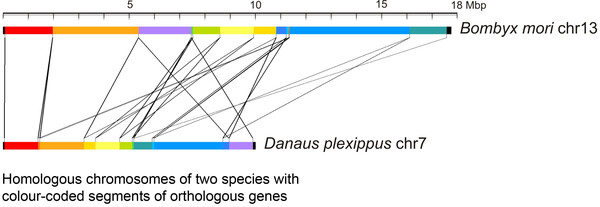
Sex chromosomes
Sex chromosome evolution differs in some respect from that of autosomes an can lead to rather eccentric chromosomes. When a pair of homologous chromosomes acquires the primary sex determining function, i. e. becomes the pair of sex chromosomes, one chromosome, called Y chromosome in species with male heterogamety, is transmitted only to male offspring while its partner, called X chromosome, occurs in both sexes, one copy in males, two copies in females. In Y chromosomes, the sex determining locus (or its homologous site when it is an X chromosome locus) becomes exempt from recombination. The non-recombining segment is likely to extend in the course of evolution and can even comprise the entire chromosome. Deleterious mutations can no longer be repaired by meiotic exchange. The genetic content is eroding, transposable elements find a convenient harbour, and long-range changes are tolerated.
Hence, sex chromosomes, X and Y (or W and Z in species with female heterogamety), may be inconspicuous, not much different from one another and from autosomes, or different to various degrees, sometimes even bizarre: in size, genetic content, transcription, heterochromatinisation, and behaviour in meiosis.
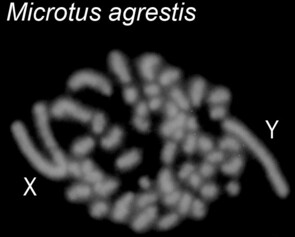
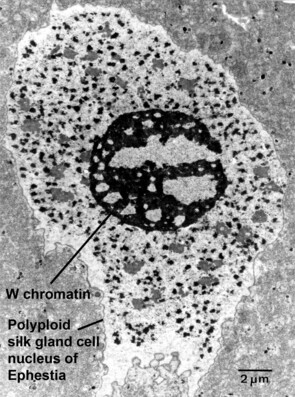
Sex determination
In insects, a cascade of gene actions starting with the primary sex determining signal down to the final activation and inactivation of sex-specific genes. regulates the development of functional females and males. The primary genetic signal varies among insect orders, families or even within a species as in the fly Megaselia scalaris. The basis of the cascade, however, is well conserved in all insects. The doublesex gene produces alternatively a female- or a male-specific protein that activates transcription of sex-specific genes of its own sex while repressing transcription of the opposite sex.
Some parasitoids like Wolbachia (Alphaprotobacteria) and Spiroplasma (Mollicutes) are able to interfere with the sex-determiminig pathway. In male genotypes, they induce dsx-splicing to the female mRNA. In some species, this results indeed in sex reversal but very often in male-killing, with drastic consequences for the population structure as e.g. in the butterfly Danaus chrysippus.
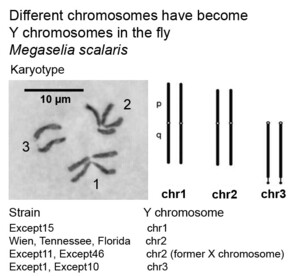
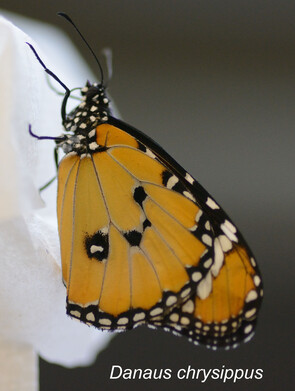

- Forschung
- Protein topogenesis
- Molecular genetics
